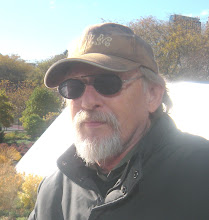Sunday, July 18, 2010
What the Wind Taught Me
We love the stories. Yang Jian-Hou (1842 – 1917) was said to be able to keep a sparrow from flying off his hand because he could feel the pressure of the bird’s feet as it tried to push off and then neutralize it so perfectly that the bird couldn’t leap into the air. Recently, in a Facebook group called Tai Chi Martial Artists, a discussion was started around the following:
Many years ago, I was training in the Carolina mountains and a most remarkable event occurred. I was standing in a low horse stance, throwing triple punch combinations in rapid succession. After about two hundred punches, upon completion of one of my strikes, I noticed a butterfly had landed on my fist. The butterfly remained there and was not disturbed. I wish to share you this message that this butterfly taught me: "The soft overcomes the hard. In your movements, rise and lower with unpredictable intention. Most importantly, leave no room for fear". My friends, no matter what style of Tai Chi you practice, I encourage you to follow the example of the butterfly. –Sifu Trick.
My own story took place when I was practicing the Long Form in the yard on a very windy day. At the first one footed stance the wind blew me over. I thought about this and realized I was not well “rooted” as I try to be during push hands. So I then began to sink as if my feet were indeed under ground like the roots of a tree while my spine remained as straight as possible and my head was elevated as if hung by a thread (as they say.) When I began the form again in a “rooted” posture, the wind could no longer interrupt my balance. My form improved immensely. Sometimes the best teachers are your experiences!
The story goes that Sun Lutang, founder of Sun style Tai Chi, went to study the martial art of Xing Yi Quan with master Li Kui Yuan. Li had him practice standing posture and wouldn’t teach him anything else. After a year of practice, Sun was good enough that when his master came behind him and struck him, he was unmoved. Li then taught him the rest of the form.
Most of us dislike standing. We complain: “I’ve been standing up all day and my feet hurt!” We don’t like standing in lines (which seems to be the way of life these days in grocery stores, airports, schools, etc.) We walk slumped over, staring at the ground (OK, so I do that not to trip!) Sun Luntang has a lot to say about standing.and Wu Ji:
Wu Ji is the natural state occurring before one begins to practice the martial arts. The mind is without thought; the intent is without motion; the eyes are without focus; the body makes no movement….
Master Sun says to stand as if on sand, without the toes griping or the heels pressing down. One of the most pleasurable times practicing the form for me was on the beach. I would practice on sand always if I could. On sand, “one stands and flows with what naturally occurs.” There is potential rather than movement. The “sinking the Qi to the Dan Tien” is done through intention rather than force.
Standing in stillness (li ding shi), says Yang Chenfu, is the taijiquan posture for preparing to move. While it may seem obvious that stillness comes before movement, the cultivation of correct stillness is crucial to the practice of Tai Chi. In most Tai Chi classes the beginning posture is explained as a period of relaxing the body but the mind must also be emptied. Concentration is on the Lower Dan Tien, the center of the body, its balance point. From the earliest writings of unknown masters called the Tai Chi Classics we find:
Relax the neck and suspend the head from the crown point.
The eyes should focus and concentrate on the direction in which the ch’I flows.
Relax the chest and arch the back.
Drop and relax the shoulders, drop and relax the elbows.
The wrist should be set comfortably while the finger tips stretch outward.
The entire body must be vertical and balanced.
The coccyx must be pulled forward and upward with the mind.
Relax the waist and the juncture of the thighs and pelvis.
The knees should stay between relaxed and non-relaxed.
The sole of the foot should sink and attack comfortably to the ground.
The real secret of Tai Chi lies in bringing the essentials of this stillness through into movement. To clearly separate the “substantial and the insubstantial” means to maintain balance in movement as if you are still.
Subscribe to:
Comments (Atom)



